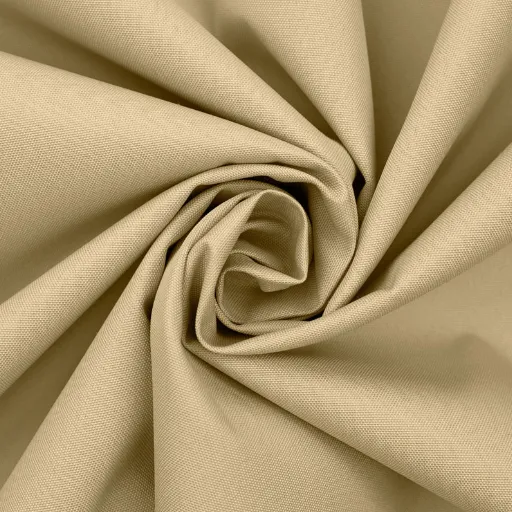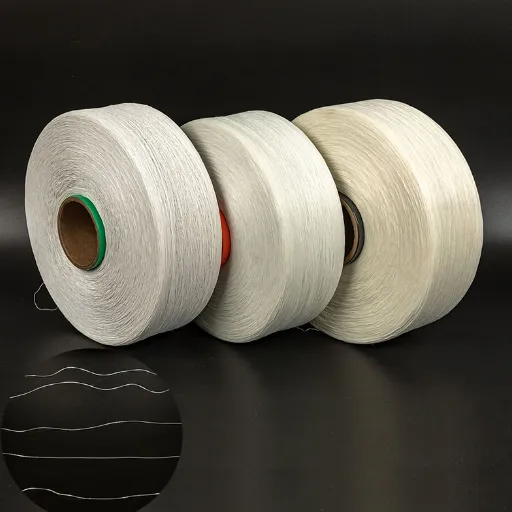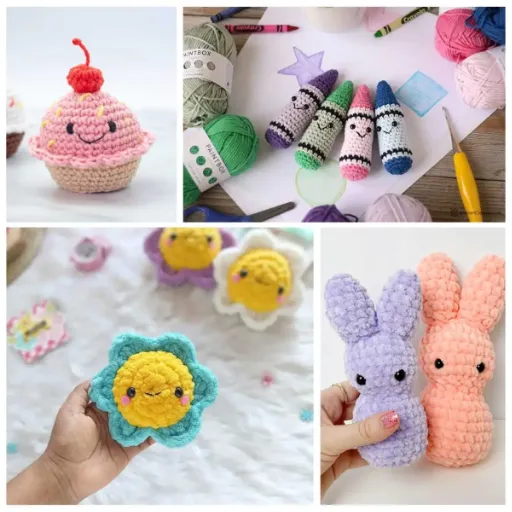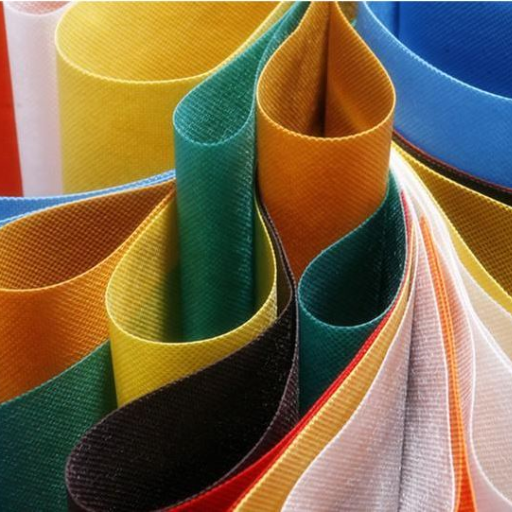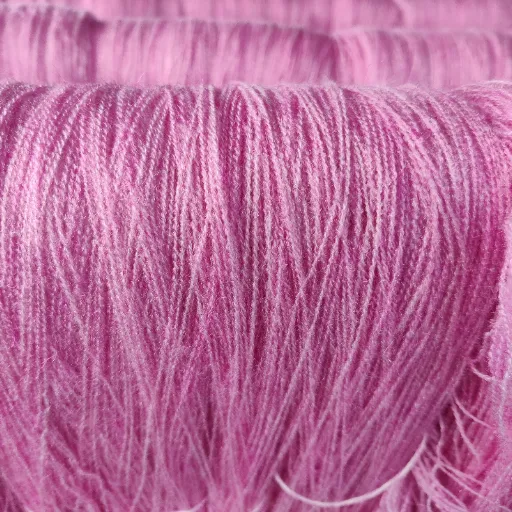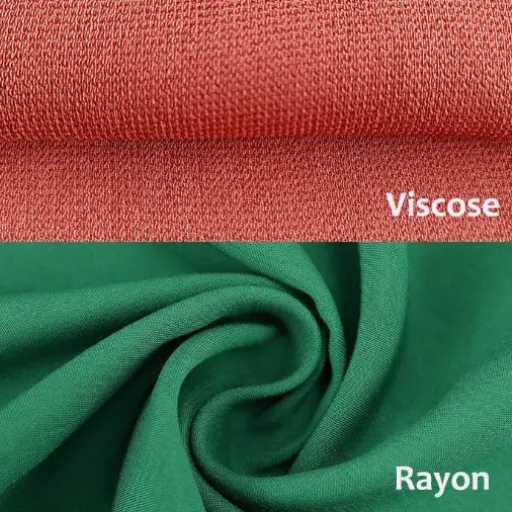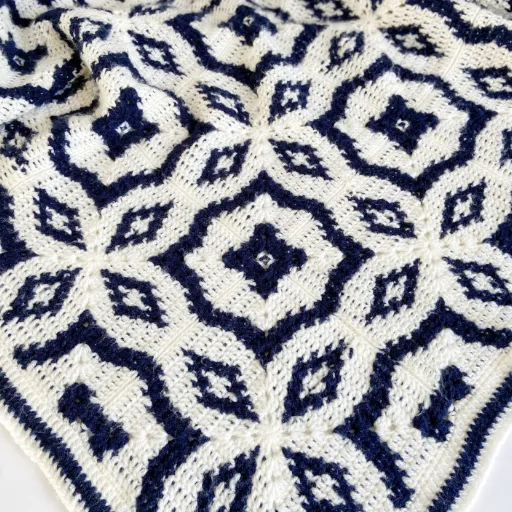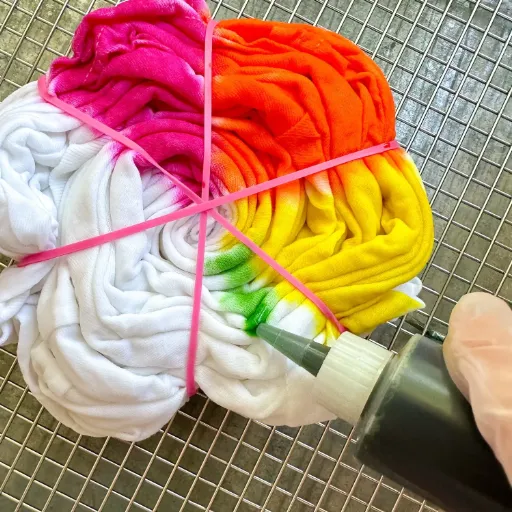Viscose and rayon are two fabric materials whose properties have made them suitable models for versatility, comfort, and style. They are delicate and breathable fibers that have long been used by the fashion and textile industry; however, many people fail to understand their origins and characteristics. What is it about easily manipulated viscose that sets it apart from other fabrics? And how has rayon gained popularity in both the fashion and interior decorating areas? This blog post aims to bridge the gap in the world of viscose and rayon by exploring each for its peculiarities, manufacturing, and issues relating to green consciousness and environmental impact. Whether you are into fashion, an eco-warrior, or just plain curious about what your favorite garments are made of, this informed piece gives much to mull over.
Understanding Viscose Fabric
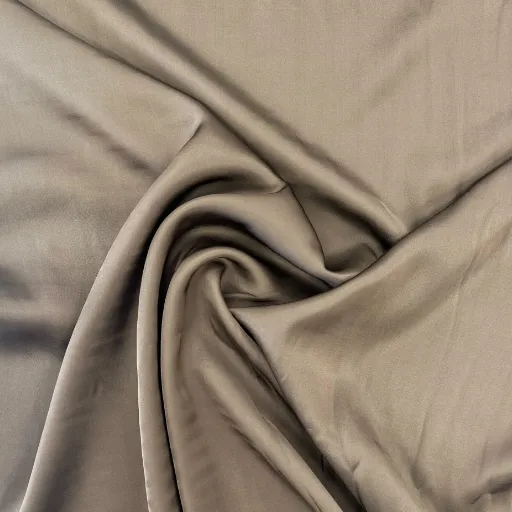
What is a Viscose Fiber?
Viscose, or otherwise known as rayon, is a semi-synthetic fiber made using cellulose, generally from wood pulp. In making viscose, cellulose is dissolved into a viscous solution using chemicals and then spun into fibers. These fibers are made into fabrics that are soft, smooth, and wonderfully flexible, while almost perfectly reproducing a natural cotton, silk, or linen feel and look.
Most rhinestones have viscose for breathability and lightness; therefore, using it for dresses, shirts, and sportswear is common. It also presents very well, flowing with grace and elegance worthy of high fashion. Interior decorators use it for curtains, upholstery, and bed linens due to its smooth texture and cost-effectiveness as compared to wholly natural or synthetic alternatives.
⚠️ Important Note: Viscose manufacturing poses significant environmental problems. For one, harmful chemicals used during the process, such as carbon disulfid,e may have implications for the environment or workers if not properly contained. Modern sustainability efforts with the promotion of green methods rely on the continuous innovation of textile manufacturing.
Types of Viscose: Rayon, Modal, and More
Aside from that, the viscose comes in all shapes, each type with its set of unique characteristics, which may make it more suitable for certain tasks. Rayon is the most common type of viscose, known for its soft hand and smooth texture. It finds its way into clothing, upholstery, and home textiles because it can breathe and give the appearance of natural fibers like silk or cotton. However, the disadvantages of rayon include the fact that it does not fare very well when it becomes wet, and in time it will tend to lose its shape or shrink, so good care needs to be taken of it.
Another kind of viscose called Modal represents a higher-grade type of viscose, which is stronger and more elastic: it is valued for softness and its ability to hold shape for longer periods of time, even after the most number of washes. Modal is blended with several other fibers, especially cotton, to improve upon the respective qualities of the fabric used in making activewear, underwear, and bed linens. Increased durability and flexibility have made Modal a well-loved competitor for the manufacture of eco-friendly textiles.
Then there is Lyocell, which is often referred to as the more eco-friendly one. Because Lyocell is produced through a closed-loop process, it poses fewer environmental problems on the side of chemical waste. Plus, it possesses moisture-wicking properties and gives a silky feel, making it a great fit in sportswear and upscale fashion. Whereas each type of viscose presents distinct advantages, modifications in their production stages are aimed at lessening their environmental footprint, thus allowing an increasing number of industries to use them.
| Type of Viscose | Key Characteristics | Common Uses |
|---|---|---|
| Rayon | Soft, smooth texture, breathable, mimics natural fibers, prone to shrinkage when wet | Clothing, upholstery, home textiles |
| Modal | Higher-grade, stronger, more elastic, retains shape after washing, very soft | Activewear, underwear, bed linens |
| Lyocell | Eco-friendly, closed-loop process, moisture-wicking, silky feel, minimal chemical waste | Sportswear, upscale fashion |
Properties of Viscose Fabrics
Any application of viscose, where this is the key property, is going to be favorable: soft and smooth to the touch. Its fibers, having an inherent lustrous appearance, are somewhat complementary of all things gorgeous, a quality that makes this fiber favorable for use in garments, through upholstery, to any application where comfort and elegance are required.
One feature that favors the use of viscose in active and casual wear would be the breathability. It allows the air to move around freely and is, therefore, an excellent choice for summer attire. Furthermore, it has moisture-wicking properties, essentially helping to keep the wearer cool and dry. This kind of transpiration and moisture control gives it functional applicability in activewear, casual dresses, and, indeed, intimates.
Viscose fabrics are incredibly flexible, being able to accept dyes of different colors and shades, all with great color fastness. This property (i.e., adaptability) renders the fabric favorable in designing vibrant patterns and making bold fashion statements. On top of these, they can also be blended with other fibers like wool or cotton, depending on the composition, to increase durability and performance without sacrificing softness. By and large, the properties of viscose fabrics offer a mix of comfort, aesthetics, and function.
✓ Key Properties at a Glance:
- Softness & Smoothness: Luxurious feel suitable for garments and upholstery
- Breathability: Excellent air circulation for summer clothing
- Moisture-Wicking: Keeps wearers cool and dry
- Dye Absorption: Accepts vibrant colors with great color fastness
- Blending Capability: Can be combined with other fibers for enhanced performance
The Production Process of Viscose
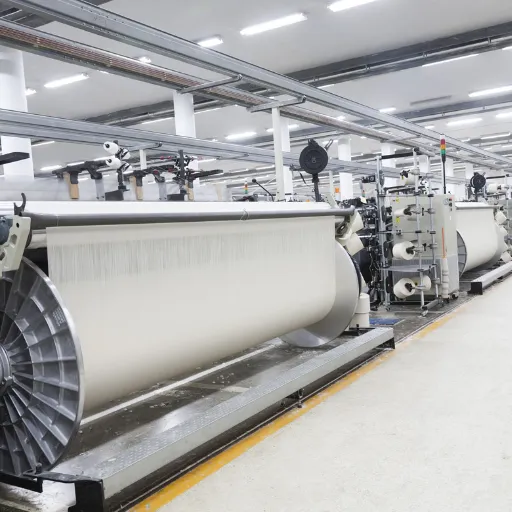
Sourcing Plant Material for Viscose
The production of viscose starts with the sourcing of plant materials, generally cellulosic materials like wood pulp. Trees such as beech, pine, or eucalyptus come into consideration, as they are rich in cellulose. In choosing these woods, one looks at a sustainable and renewable source for viscose production, which goes in line with the emerging emphasis on environmentally friendly manufacturing.
After the trees are cut, the manufacturing process of turning them into pulp begins by removing lignin and other non-cellulose substances, so as to get the pure form of cellulose. This cellulose is needed for making the viscose solution, forming the basic fabric. Apart from making top-grade production, the preparation earns another name in that it is low in wastage, giving more credit to sustainability on the pathway.
On the other hand, wood from responsibly managed forests would help reduce the environmental impact of producing viscose. Typically, manufacturers place their value on wood harvested from certified forests with sustainable use planning, which involves replanting and conservation of biodiversity. This kind of careful decision shows how well the industry has managed to seek some ecological footing while having to come to terms with material sourcing.
The Closed-Loop Production Method
Aiming to minimize environmental harm, the closed-loop production method for viscose works on recovering and reusing chemicals involved in the manufacturing process. In such cases, the whole of environment-related chemical waste is minimized, which is a major challenge faced in the conventional viscose-production processes. By recycling solvents, manufacturers improve the sustainable production of viscose and reduce the negative impact on the ecosystem.
In addition, the method considerably curtails water consumption and reduces the use of energy, thus having less resource intensity. Through investments in modern technology, artists can now process viscose attuned toward an environmentally sound approach without compromising on their product’s quality. These developments are fostering an acceptance of sustainability and the promotion of climate action within the textile industry.
Closed-loop systems are a prerequisite step toward greener viscose products. There are still some challenges, like ensuring complete compliance and scaling up the technology, yet this appears to be a strong candidate for alleviating the viscose environmental footprint. Conscious consumers supporting products that employ the closed-loop approach will help foster sustainability within the textile industry.
🔄 Benefits of Closed-Loop Production:
- Recovers and reuses chemicals, minimizing waste
- Significantly reduces water consumption
- Lowers energy usage in production
- Reduces environmental impact on ecosystems
- Maintains product quality while being eco-friendly
Environmental Considerations in the Production of Viscose
The viscose industry, indeed, is known to present environmental challenges on account of its resource-intensive manufacturing processes. The chief concern here is the application of chemicals such as carbon disulfide and sodium hydroxide, which may be hazardous if allowed to enter the environment without treatment. Used in the process of converting wood pulp into viscose fibers, these chemicals can generate highly toxic wastewater and gaseous emissions if untreated reach the open environment. This, therefore, makes waste management neuron-cotra-wall to curbing the environmental impact of viscose production.
Deforestation is yet another very grave issue related to the production of viscose. The exploitation of wood pulp for viscose often entails the depletion of natural forests, disturbing ecosystems, and contributing to biodiversity loss. Such an issue is largely caused by the unsustainable logging practices, hence exerting more pressure on endangered and protected forests. To alleviate the problem, the wood pulp should be sourced responsibly from certified sustainable forests.
Water consumption and energy use are other substantial environmental considerations. The production process slurps huge quantities of water and energy, also aggravating the environmental strain. More energy-efficient technologies, where possible, and closed-loop systems should help cut down water and energy consumption, thus minimizing the ecological footprint. Hazardous these concerns cannot be an option; only then can viscose production be really termed sustainable.
| Environmental Challenge | Impact | Solution |
|---|---|---|
| Chemical Usage | Toxic wastewater and gaseous emissions from carbon disulfide and sodium hydroxide | Proper waste management and closed-loop systems |
| Deforestation | Ecosystem disruption, biodiversity loss, and carbon emissions | Source from certified sustainable forests (FSC, PEFC) |
| Water & Energy Consumption | Massive resource depletion and environmental strain | Energy-efficient technologies and closed-loop systems |
Sustainable Viscose and Its Impact
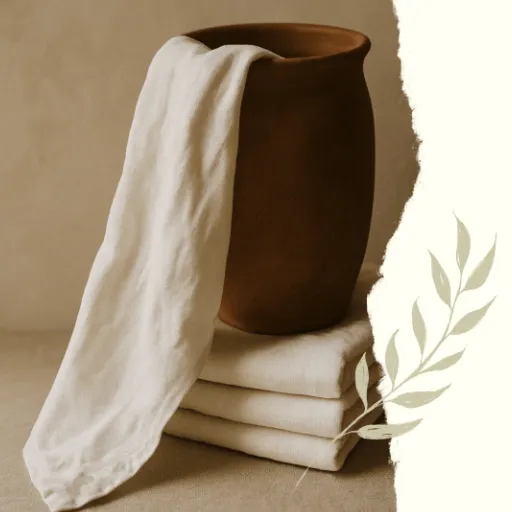
What Makes Viscose Sustainable?
A good deal of sustainable viscose is about the responsible sourcing of raw materials, efficient production, and a low environmental footprint. The sustainability of viscose starts with the use of wood or plant cellulose from responsibly managed forests. Forest certification programs, such as the Forest Stewardship Council or PEFC, ensure that the raw materials come from forests managed in an environmentally, socially, and economically responsible way.
Another major aspect concerned with this act is environmentally friendly manufacturing. Sustainable viscose production relies heavily on the use of closed-loop systems that recycle water and chemicals in the production processes. These processes hence eliminate harmful emissions and solid waste adverse consequences originally associated with the manufacture of viscose. By reducing the use of toxic chemicals and ensuring their safe disposal or reuse, a company can greatly reduce its environmental impact.
In addition, the sustainability of viscose lies in its biodegradability, which aids circular fashion systems. Unlike synthetic fibers, viscose breaks down relatively easily at the end of its life cycle, thus creating little residual waste in landfills. Recycling of viscose materials and reprocessing in the production of new textiles further enhance sustainability by cutting down the demand on virgin resources and invigorating a circular economy.
Biodegradable Characteristics of Viscose Fabrics
Viscose fabrics are biodegradable, given their natural origin and chemical constituents. Since it consists of cellulose is, a plant-based material-viscose would, when disposed of properly, be able to in fact, biodegrade in nature, exposure to microorganisms, oxygen, and moisture being a few requirements for the same. Hence, this would be an eco-friendly option when compared with synthetic fibers that might linger in landfills for multiple decades.
Viscose biodegradability relies on a number of factors that include the surrounding ecosystem and application methods adopted during its production. Depending on how it is disposed of, viscose will start degrading after a few weeks or months, almost leaving no residue. Laboratory tests conducted may prove that viscose was able to exist in controlled composting conditions. Hence, a strong case can be made for its application as a method of reducing waste.
For the conscious consumer and producer who believes in sustainability, the biodegradable property of viscose somehow means that textile wastes in landfills could be greatly reduced. When combined with recycling schemes and circular-stage production methods, this material offers an environmental alternative to completely synthetic materials, a step towards a greener planet. If consumers are watchful in choosing and disposing of viscose products, the greatest cosmetic benefit from biodegradability can be obtained.
🌱 Biodegradability Benefits:
- Natural Degradation: Breaks down through exposure to microorganisms, oxygen, and moisture
- Quick Decomposition: Starts degrading within weeks to months
- Minimal Residue: Leaves almost no waste behind
- Landfill Reduction: Significantly reduces textile waste in landfills
- Eco-Friendly Alternative: Better option compared to synthetic fibers that persist for decades
Innovations in Sustainable Viscose
Sustainable innovations in viscose strive to mitigate the environmental impact through advances in production processes and raw material sourcing. One main area of intervention is reducing the use of chemicals and water in manufacturing. New cleaner technologies, such as closed-loop systems, in which solvents are recovered and reused, reduce emissions and waste.
Further sustaining the industry is the buy-back of raw materials from responsibly managed forests. Certification programs like FSC promote that wood pulp used for viscose production is derived from sources that are sustainable and ethically governed. Another way in the emerging area is to use alternative feedstocks such as agricultural residues or recycled textiles, which reduces the necessity of virgin materials for the industry.
Below these efforts, other initiatives target biodegradability and circular economy principles. By designing viscose products that are easier to recycle or naturally degrade, a manufacturer can increase the product’s lifespan and reduce its impact on landfills. These innovations, along with customer awareness and proper disposal, could really help put viscose on the map as the sustainable option for textiles.
Using Viscose in Fashion and Home Textiles
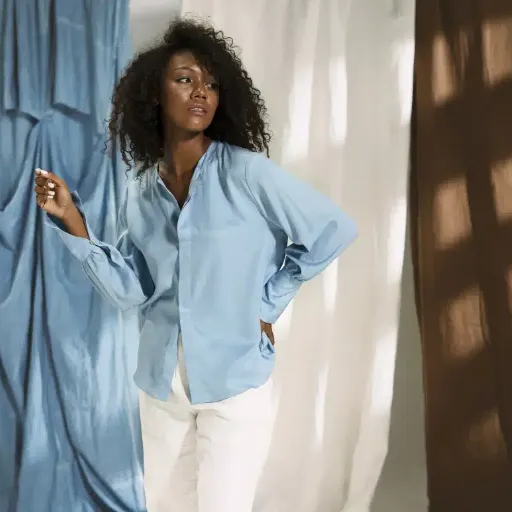
Clothing Items and Viscose
A number of fashion firms across the world employ viscose in their designs for its varied use and sustainability potential. Viscose, made from natural plant fibers, offers a liberal breathability and silk feel through an imitator versus a luxurious fabric such as silk or cotton, but offers an economical alternative. Being lightweight and moisture-absorbing, it suits being worn in several types of garments-wearing everything from dresses and blouses to casual and formal wear.
These brands are now valuing the eco-friendly nature of viscose while continuing sustainable production methods. Certified viscose is one that is manufactured with increased ecological consciousness, allowing little deforestation and under the responsible control of water management in the production line. By sourcing more environmentally friendly viscose, the garment manufacturers would perhaps curb some of the issues associated with fabric manufacturing and resource depletion, yet keeping intact the high quality of environmentally sound products.
The affinity of viscose for blending with other fibers grants the manufacturers the freedom to explore alternative materials to improve comfort and resistance. With initiatives being propelled toward improving its production and utilization, the responsibly produced viscose is set to gain dominance in fashion along parallel paths toward environmental consciousness within the industry.
Viscose in Home Decor: Uses and Advantages
In home décor, the versatility and affordability of the fabric have increased its eminence on the market, equating with beauty. One of its prime applications is in upholstery for furniture, where the soft texture feels comfortable, and the plush look offers style. Other decorative applications for viscose include curtains and drapes since they can take up the dye nicely, giving a home interior rich glamor in colors.
Another area of decor applications is that of rugs and carpets. This, owing to silklike gleam and smooth texture, can serve as an excellent alternative to costly silk fibers, providing a higher prestige yet at a more affordable cost. The intricate patterns attainable through weaving with viscose make it an excellent choice to feature in accent pieces within a living space.
Another practical use of viscose for home decor is that it can occlude air and absorb moisture, rendering it suitable for decorating the home with bed linen and cushion covers, thus making space more comfortable. When it comes to handling and maintenance, however, viscose should be considered negative: it is water-sensitive and may wear away with time. Properly treated viscose-based décor can balance style and function beautifully to fit any home setting.
| Application Category | Specific Uses | Key Advantages |
|---|---|---|
| Fashion & Clothing | Dresses, blouses, shirts, sportswear, activewear, underwear, formal wear | Breathable, lightweight, silk-like feel, moisture-absorbing, economical |
| Home Textiles | Curtains, drapes, bed linens, cushion covers | Soft texture, excellent dye absorption, air circulation, moisture absorption |
| Furniture & Decor | Upholstery, rugs, carpets, accent pieces | Silk-like gleam, smooth texture, affordable alternative to silk, intricate patterns |
Fashion Trends Featuring Viscose Fabrics
Being versatile, cheap, and with that touch of luxury, viscose fabrics have found their contemporary fashion trends to be one area of their stretching. Known for their silkiness and hence ability to imitate the feel of natural fibers like cotton, silk, and wool, viscose is thus gaining popularity with casual, formal, and high-profile fashions alike. Designers usually go for viscose to create light dresses, flowing skirts, and airy blouses, offering not only comfort but also style. Being a fabric that drapes naturally builds a very flattering silhouette, making it a classic in this generation.
Sustainable fashion has also taken up viscose, as many environmentally friendly brands look into trying their hand at a better-sourced version of this fabric. While the conventional production of viscose is often frowned upon because of the environmental impact it brings about, manufacturing avenues are becoming better at minimizing these hazards, thus providing a greener alternative. This makes the fabric a compelling choice for consumers who want clothes that are both stylish and sustainable. The additional blending of viscose makes it more functional-for instance, between linen and Tencel, among others-while still propagating a green agenda.
Viscose gets seasonally pushed by trend waves, especially in the warmer months. During summer, it displays brilliance with prints and outfits in pastel shades, owing to its properties of breathability and moisture-wicking. Then again, during transitional weather, it calls for viscose-layering pieces-lightweight knits and outerwear. Such variability appreciates and assures the continued choice of the fabric among designers and buyers alike, always balancing comfort, elegance, and pragmatism.
Challenges and Considerations
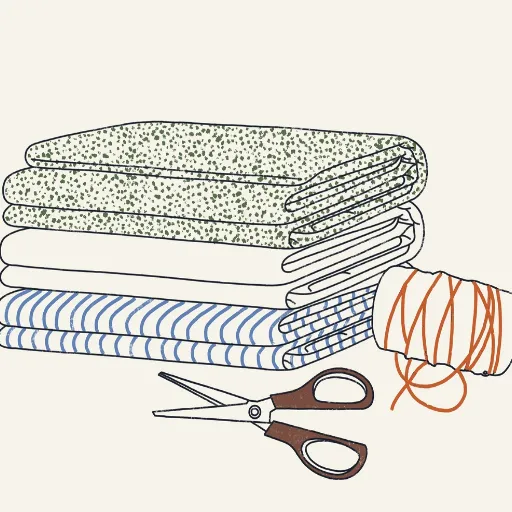
Environmental Impact of Viscose Production
Viscose production is valued for versatility and cheapness but indeed poses major environmental threats. For instance, using wood pulp as a raw material can encourage deforestation and habitat destruction if the wood is not sourced sustainably. Logging is a procedure involving the cutting down of trees, which may lead to loss of biodiversity and huge carbon emissions in the environment.
The other major environmental impact is associated with the pulp chemical-intensive procedures for converting wood pulp into viscose fiber; substances such as carbon disulfide, sodium hydroxide, and sulfuric acid, which have all been dangerous to the environment when dumped into it, contaminate river water, soil, and so on, when not disposed of properly and endanger ecosystems and human health by polluting.
By trying to avoid these effects, wood pulp is obtained from certified forest sources alongside the use of closed-loop production methods wherein the chemicals are recovered for reuse, lessening pollution and waste. Funding for cleaner technologies for alternative fibers and more regulatory watching are also required to lessen the environmental impact of viscose production.
Consumer Awareness and Choices
Consumers hold a crucial position in mitigating environmental impacts linked to viscose production and could do so through informed purchase decisions. If considered careful, buying products from the sustainable viscose or otherwise from reputed environment-based organizations would greatly help in halting deforestation and pollution. Such certifications assert the responsible sourcing of raw materials and adherence to environmental standards in production processes.
Further, consumers can favor organizations that offer full disclosure of their production activities. Look for those that reveal environmental policy, supply chain processes, and attempts to employ cleaner technologies. Promoting the virtue of transparency will help companies embrace sustainability-themed activities while cementing an industrial code of conduct within the industry.
Finally, one other way is to opt for alternatives and purchase less viscose; thereby, demand for viscose drops further. Promoting the circular economy through recycling, repurposing, and buying in excess of secondhand options can also assist in cutting down the environmental footprint. Awareness campaigns, including public education, shall impart sufficient impetus for the consumer to opt for anything considered environmentally responsible, thus laying down the path toward a sustainable future.
💡 Consumer Action Steps:
- Choose Certified Products: Look for FSC or PEFC certifications indicating sustainable sourcing
- Support Transparent Brands: Favor companies that disclose environmental policies and production processes
- Reduce Consumption: Buy less and choose quality over quantity
- Embrace Circular Economy: Recycle, repurpose, and buy secondhand
- Stay Informed: Educate yourself about sustainable textile options
The Future of Viscose in the Textile Industry
The future of viscose in the textile industry really depends on whether it can really meet the demands of sustainability and cater to the purchasers’ needs for eco-friendly products. Viscose made from wood pulp has mostly been cited in environmental issues for deforestation and the use of harmful chemicals in production. However, with improved technologies and sourcing viscose from forests certified to be sustainably managed, these concerns might be resolved, making viscose a real possibility in time to come.
One great determinant in the future of viscose remains the transition of the industry towards circular economy practices. Recycling technologies, closed-loop systems of production aimed at waste reduction, and minimal environmental footprint from viscose production are on the way. This in turn with an improved transparent supply chain, which can hold itself accountable, certainly makes potential for the material to become increasingly of interest to the eco-brand and consumer, ultimately keeping it relevant on an already sustainability-led market.
Further, viscose is also considered low-cost, high-performance, soft, and comfortable to wear. This provides a greater scope of application, including apparel and interior decoration. To retain its place, viscose will need to go on finding benefits while suffering fewer drawbacks. How much importance manufacturers and stakeholders place upon innovation and ecology will be the decider of how long and well viscose stands.
Frequently Asked Questions (FAQ)
Q: What are viscose products made from?
A: Viscose products are primarily made from regenerated cellulose fibers, obtained from wood pulp or bamboo, among others. The viscose process dissolves these cellulose sources into a medium able to be spun into yarn for various textile usages.
Q: How does the viscose process work?
A: The viscose process generates fibers by treating cellulose with chemicals, which produce a viscous solution extruded through spinnerets to create rayon filaments. This is the process for making rayon and viscose fabrics, which are known for their softness and drape.
Q: Are all viscose products eco-friendly?
A: When the raw materials are renewable, viscose can be considered an environmentally-friendly textile, but the issue is in the sourcing practices. A brand that sources from more sustainably managed forests or FSC-certified wood is making more environmentally-friendly viscose products, as opposed to those not observe these practices.
Q: What are the different types of rayon?
A: There are many types of rayon, including viscose, lyocell, and modal. Each type is produced by different methods involved in producing rayon with respect to fiber properties and environmental impact. Viscose is the most common, often applied to clothing and home textiles.
Q: How do viscose fabrics compare to cotton fabrics?
A: Viscose fabrics are usually softer to the touch with a luxurious feel, more so than of cotton fabrics. However, cotton is more durable as it is a natural fiber, while viscose is a semi-synthetic cellulosic fiber with the ability to mimic silk and is, therefore, a preferred substitute to silk in various clothing brands.
Q: Are viscose products dry cleanable?
A: Yes, and many viscose products can be dry cleaned; however, always check the care label for specific instructions. Some viscose fabrics also provide for a machine-washable option, but it should be done with high caution to avoid shrinking or damaging the fibers.
Q: What are the greatest benefits of bamboo in viscose?
A: Bamboo is a fast-growing plant that uses little water and no pesticides, rendering it one of the best environmental choices for viscose production. Bamboo pulp can be converted into regenerated cellulose fibers, forming soft and breathable fabrics commonly used in clothing and home furnishings.
Q: What should I watch for in a clothing brand that uses viscose?
A: Consider the sourcing and its environmental impacts and the commitment of a clothing brand that uses viscose products toward sustainability. Look for the FSC-certified material as well as standards that emphasize sustainably owned forests.
📚 References
-
Impactful Ninja: Most Sustainable Viscose Clothing Brands – A guide to sustainable viscose clothing brands and their practices.
-
Szoneier Fabrics: Top Rayon & Viscose Fabric Suppliers – Information on trusted suppliers of rayon and viscose fabrics.
-
Segura: Sustainable Sourcing Challenges for Viscose – Insights into sustainable sourcing and challenges in the viscose industry.
-
Contrado Blog: What Is Viscose? – A detailed explanation of viscose, its production, and uses.
-
Wikipedia: Rayon (Viscose) – A comprehensive overview of rayon (viscose), its properties, and applications.








